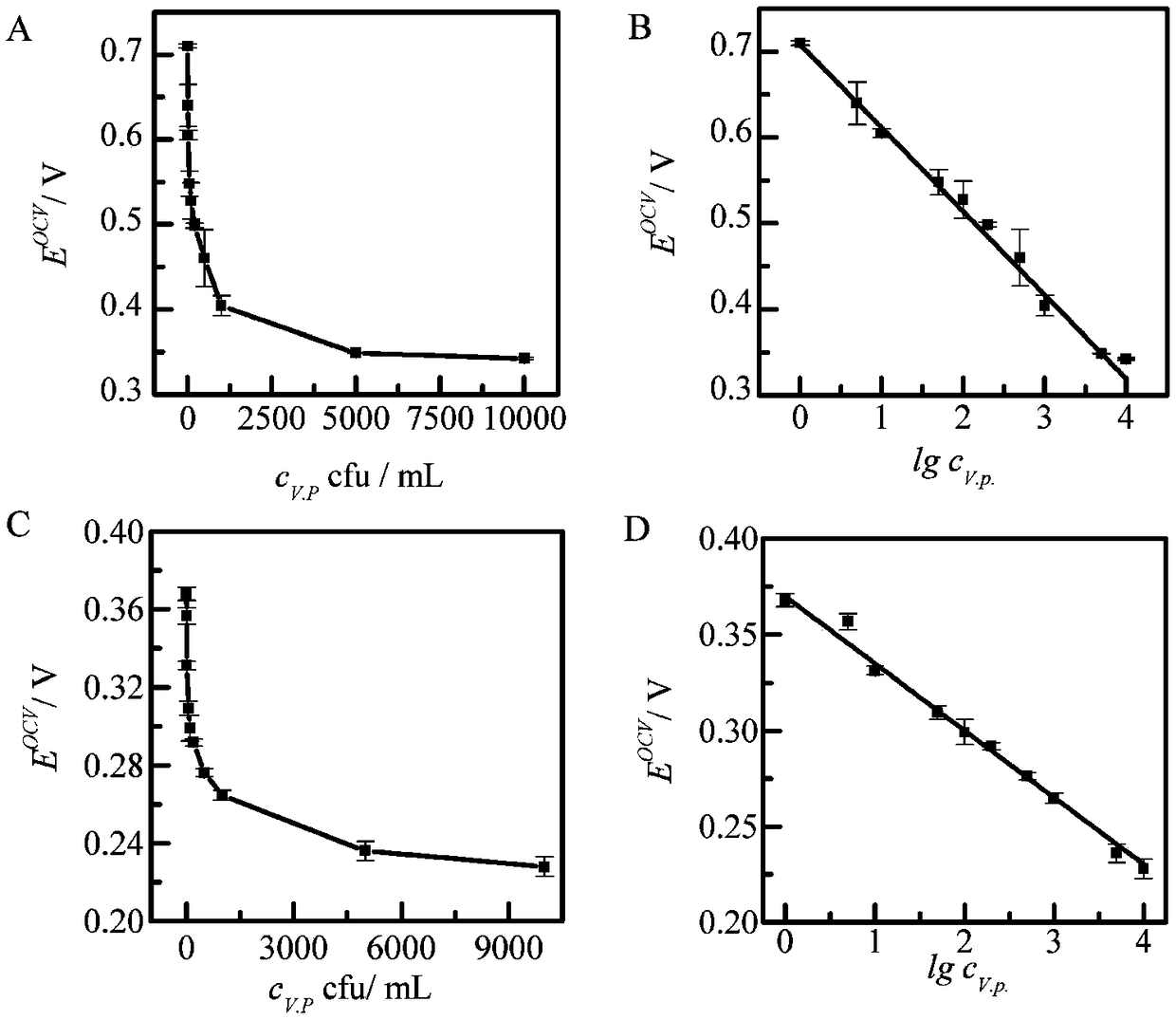Enzyme biofuel cell (EBFC)-based self-powered bacteria biological sensor and application thereof
A biosensor and self-powered technology, applied in the field of biosensing, can solve the problems of difficult, expensive, and complex detection, and achieve the effects of improving detection sensitivity, low cost, and high selectivity
- Summary
- Abstract
- Description
- Claims
- Application Information
AI Technical Summary
Problems solved by technology
Method used
Image
Examples
Embodiment 1
[0038] EBFC-based self-powered bacterial biosensor for detection of V. parahaemolyticus.
[0039] (1) Preparation of AuNPs:
[0040] 4 mL of HAuCl 4 Add to 96mL of secondary water, stir and heat to boiling, quickly add 10mL, 38.8mM sodium citrate solution and boil for 15min, then cool to obtain wine red transparent liquid is AuNPs;
[0041] (2) Preparation of CNT / AuNPs:
[0042] Weigh 8mg of carbon nanotubes (CNT) and dissolve them in 4mL, 1% polydiallyldimethylammonium chloride (PDDA) for ultrasonic treatment for 30min, then centrifuge and wash the resulting solution at 15000rpm for 15min for several times, and take the supernatant The obtained black solid was fixed to volume with 1 mL of secondary water, and the solution obtained in step A was added to 10 mL for adsorption overnight, then ultrasonically washed at 5000 rpm for 6 min, and the obtained precipitate was dispersed in 1 mL of secondary water to obtain a CNT / AuNPs mixture;
[0043] (3) Preparation of MCH / aptamer / ...
PUM
 Login to View More
Login to View More Abstract
Description
Claims
Application Information
 Login to View More
Login to View More - R&D
- Intellectual Property
- Life Sciences
- Materials
- Tech Scout
- Unparalleled Data Quality
- Higher Quality Content
- 60% Fewer Hallucinations
Browse by: Latest US Patents, China's latest patents, Technical Efficacy Thesaurus, Application Domain, Technology Topic, Popular Technical Reports.
© 2025 PatSnap. All rights reserved.Legal|Privacy policy|Modern Slavery Act Transparency Statement|Sitemap|About US| Contact US: help@patsnap.com


